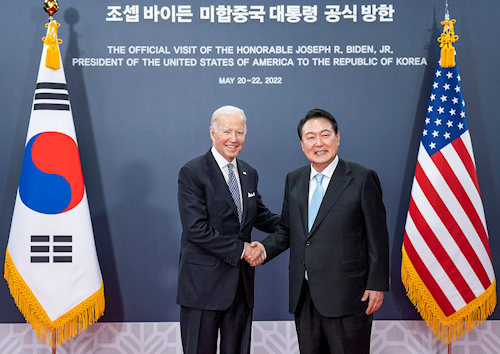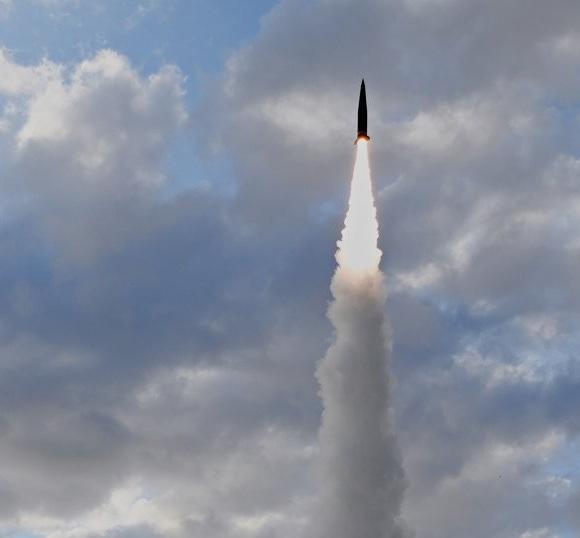The month of January 2023 will be remembered on the Korean peninsula as the moment in which South Korea for the first time in its history broke a taboo that had conditioned its security policy since at least the 70s. In a statement that left many insiders breathless, the President of South Korea, Yoon Suk-yeol, announced that, should the geopolitical security situation of the Korean peninsula deteriorate further, your country could consider acquiring its own nuclear arsenal. If such a decision is made and Seoul carries out this plan as advertised, then South Korea would become the tenth country in the world to possess nuclear weapons.
The first attempts by the "Republic of Korea" (official name of the country) to approach strategic weapons par excellence date back, as already mentioned, to the early 70s of the twentieth century when the American authorities signaled for the first time to their counterparts South Koreans who would proceed to a progressive withdrawal of their previously deployed nuclear weapons in the peninsula while reducing the numerical strength of their conventional forces present on the ground.
After the American defeat in the Vietnam War in 1975 and the simultaneous end of South Vietnam, which was absorbed into the new unified Vietnam, the President of South Korea, Park Chung-hee, fearing that this fate would soon befall his country too, decided to approve a secret plan to achieve full nuclear autonomy.
The original plan of the Seoul decision-makers did not achieve its objective because France, contacted in order to provide covert assistance (a bit like it had happened in previous decades with Israel and South Africa) yielded to pressure from the United States of America, the which then convinced the South Koreans that they would never give up on their commitments relating to the preservation and territorial integrity of the Republic of Korea. However, South Korea was free to continue its civilian nuclear program, achieving full "nuclear latency" status today.

To the uninitiated, a state is referred to as a “latent nuclear power” if it has at its disposal all the nuclear infrastructure necessary to convert itself into a full-blown nuclear power without however still having the "Bomb" at its disposal.
According to independent estimates, if today South Korea actually decides to acquire nuclear weapons and wants to produce them autonomously, it could very easily do so in a time span of just 6 months.
However, acquiring nuclear weapons represents only part of the problem, given that this device must then be launched from a specific carrier which can be airborne, naval or, even better, missile. From this point of view, even if the world in recent years has focused more on what North Korea has done, even South Korea has not remained idle, developing its series of ballistic missiles and strategic cruise of the class Hyunmoo. The first missile in the series, lo Hyunmoo 1, deployed in a single version, the 1A, became operational as early as 1986 starting from the technology of the American Nike Hercules anti-aircraft missile. Although capable of a theoretical range of 250 kilometers, the South Koreans decided to limit its range to 180 kilometers as a "sign of détente" towards their northern neighbour.
After a phase of stagnation during the 90s, the South Koreans resumed work on their strategic program during the XNUMXs with the ballistic missile Hyunmoo 2 (photo) and the cruise missile Hyunmoo 3, the first developed in 3 versions (2A, 2B and 2C) and the second in 4 (3A, 3B, 3C and 3D).
The last chapter of this saga is being consumed in these years with the arrival of the ballistic missile Hyunmoo 4 and the affine Hyunmoo 4-4 (the latter developed specifically to be launched from submarines). As the program progresses, the performance of the carriers will also increase, moving from Hyunmoo 1A equipped with a 500-kilo warhead and with a range of 180 kilometers per hour Hyunmoo 4 credited with a warhead weighing 2.500 kilos and a range of 800 kilometres, while the most avant-garde cruise missile, the Hyunmoo 3D credited with a 500-kilo warhead, it would have a range of 3.000 kilometres.
Thus, the arms race on the Korean peninsula risks, on the one hand, accelerating nuclear proliferation at a local level and, on the other, merging with the parallel Sino-American conflict for control of Taiwan and the South China Sea, making overall, the outcome of the Far-Eastern crisis is highly unpredictable.
Photo: Yonhap News Agency / Office of the president of the United States












